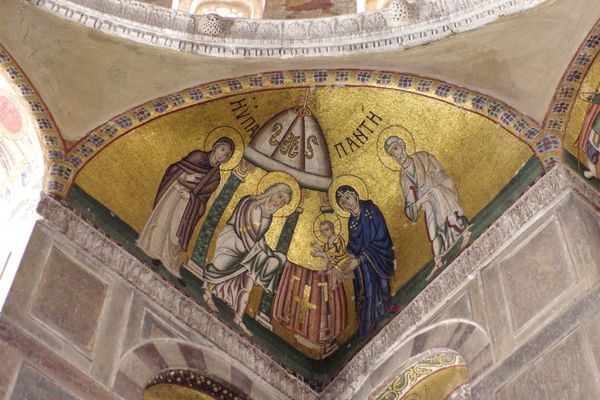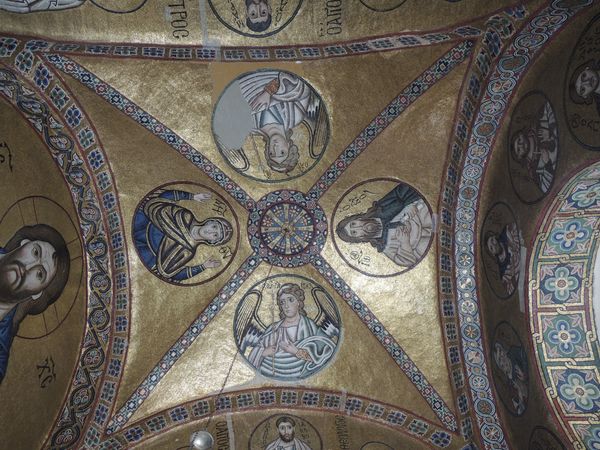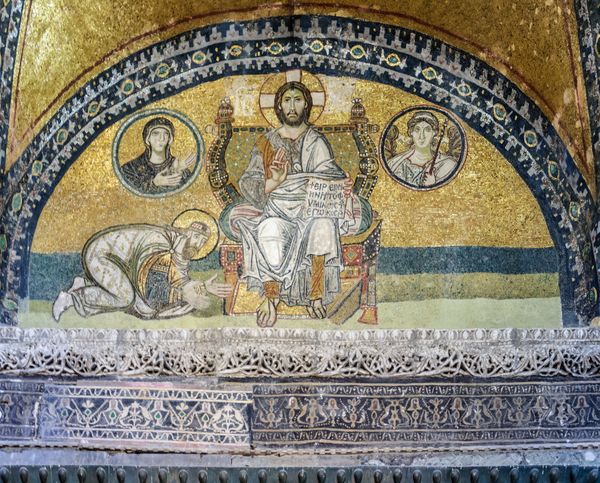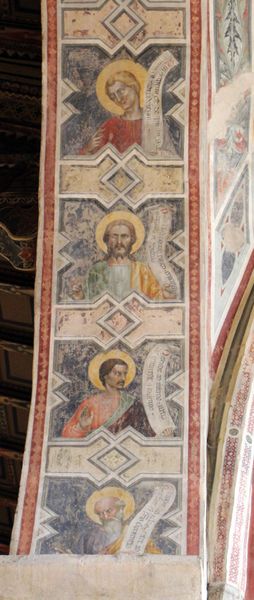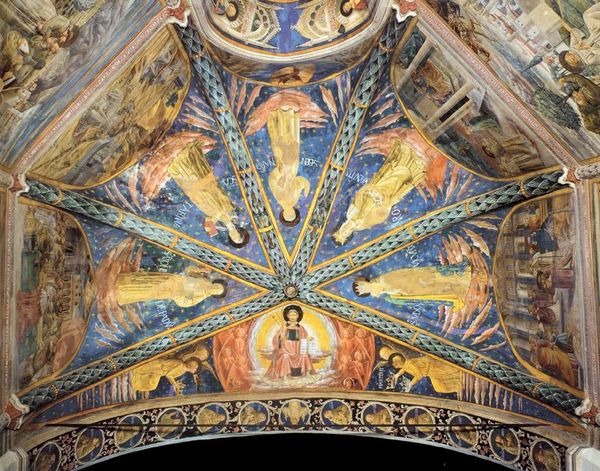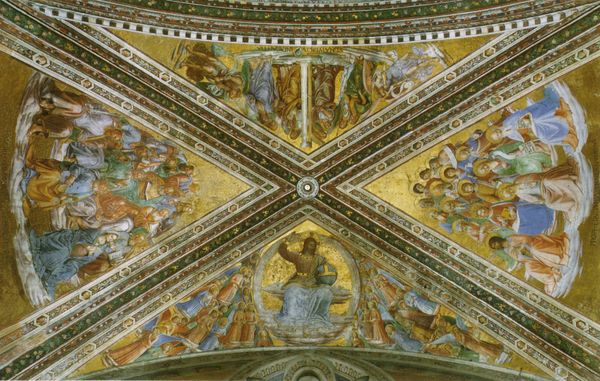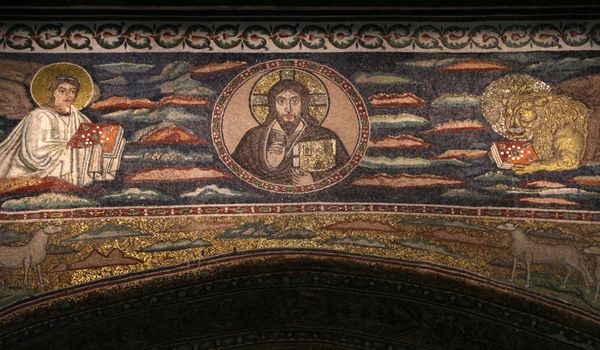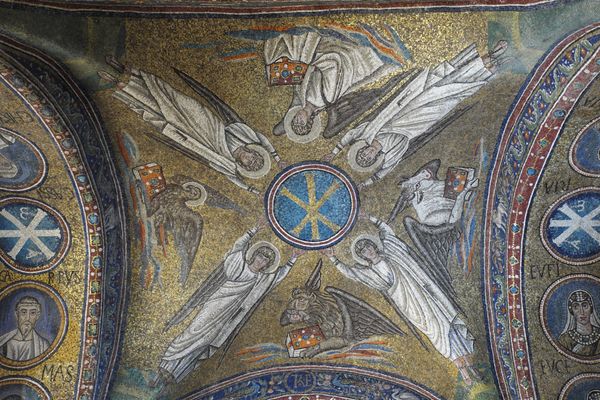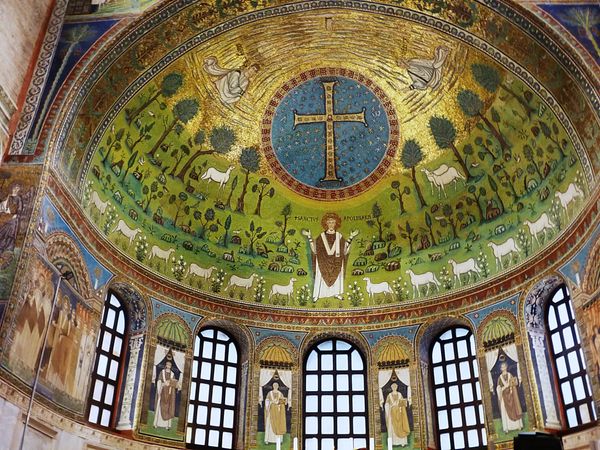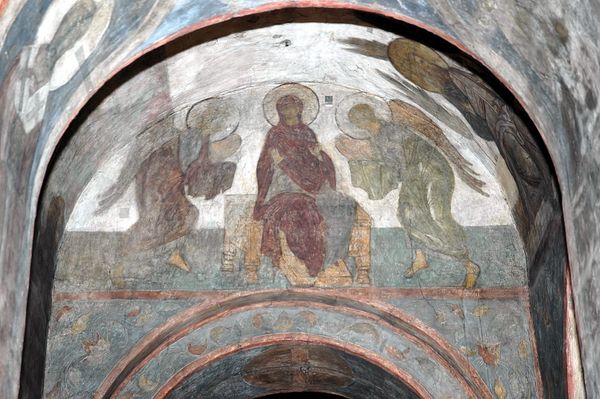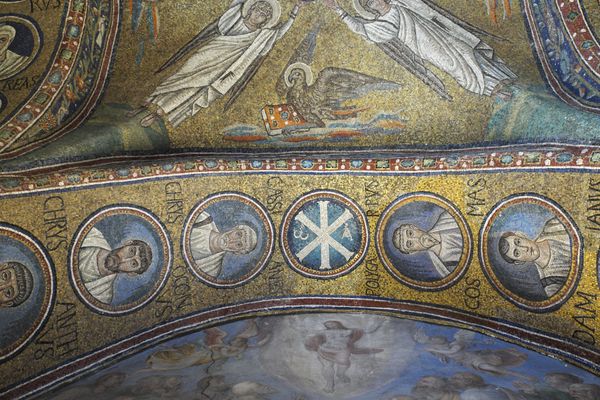
mosaic, fresco, architecture
#
mosaic
#
byzantine-art
#
figuration
#
fresco
#
history-painting
#
architecture
Copyright: Public domain
Curator: This stunning mosaic, titled "Baptism," dates back to around 1025. We're viewing it here at the Hosios Loukas Monastery in Distomo, Greece, a pivotal example of Byzantine artistry. Editor: My immediate impression is one of shimmering grandeur, Curator. The gold background evokes a divine space, contrasting sharply with the dynamic blues depicting the river. It draws your eyes into the scene almost magically. Curator: Precisely. Consider its place within the monastery's history. Commissioned during a period of significant political and religious consolidation in the Byzantine Empire, such monumental artworks like this served not merely as decoration but as powerful statements of imperial and spiritual authority. These mosaics are not simply images, but tangible representations of dogma for both clergy and pilgrims. Editor: Looking at the arrangement, the figures of Christ, John the Baptist, and the attending angels aren’t set against a naturalistic landscape. The focus seems purely on their symbolic interaction and the act of baptism itself, all captured by the meticulous arrangement and colors. I'm struck by the almost geometric treatment of the water's waves. Curator: Good observation. Byzantine art often eschewed realism in favor of conveying deeper spiritual meanings. The mosaic's placement high in the architecture also encouraged the viewer to look upward, to reflect on divine events in this public setting. Think about the cost involved to implement that sort of technique and how that spoke of power at that time. Editor: It also dictates our gaze so completely, from the mundane architecture, upwards into a transcendental domain! Each tessera must have been laid with extraordinary intention, guiding us towards spiritual awakening. It's fascinating how something created with tiny pieces has such a large, imposing presence. Curator: The monastery held considerable economic influence over the region, and its patronage directly affected both the imagery displayed, the local Byzantine mosaic trade, and the ways in which visitors would understand religious art. Editor: Absolutely! The more you consider it, the greater its artistic success is revealed, don't you think? Curator: Indisputably, from socio-political power structures down to visual, formal qualities! It represents much more than faith made visual. Editor: Well stated, Curator. This dialogue gave an enlightening dive from shimmering tesserae to the Byzantine empire!
Comments
No comments
Be the first to comment and join the conversation on the ultimate creative platform.

